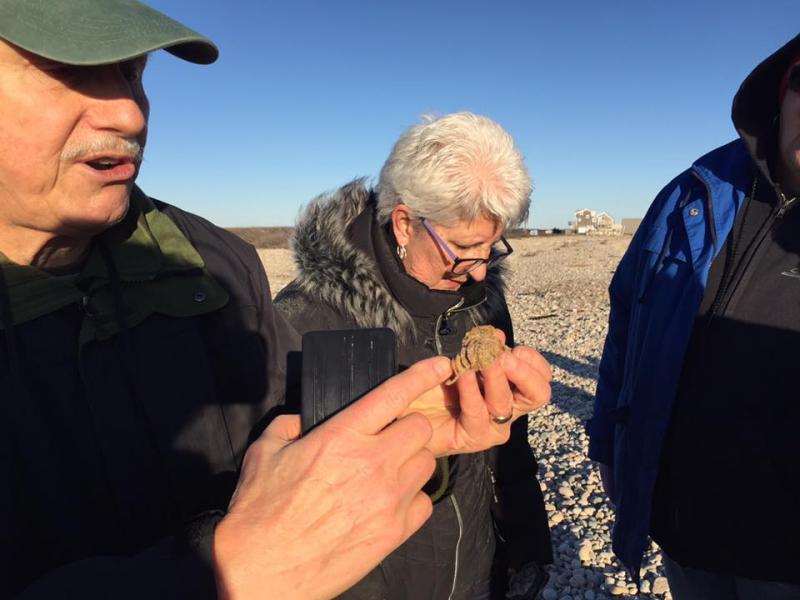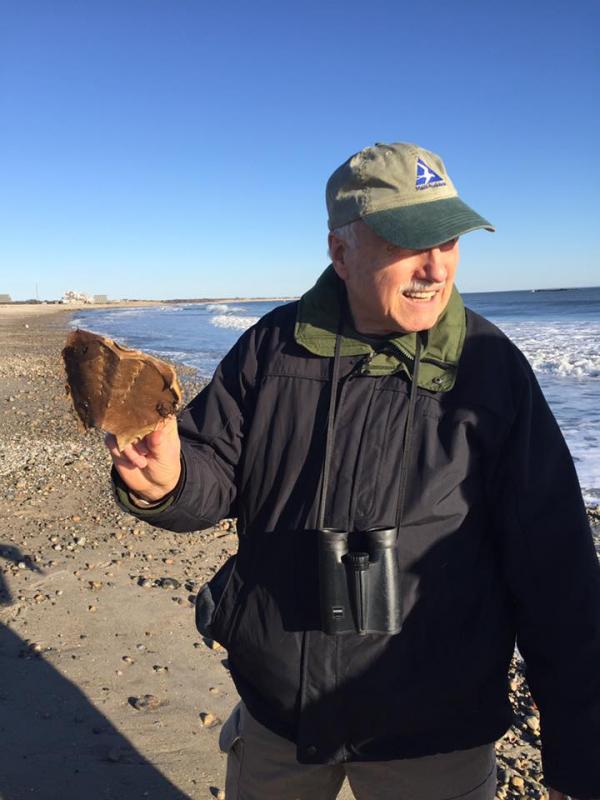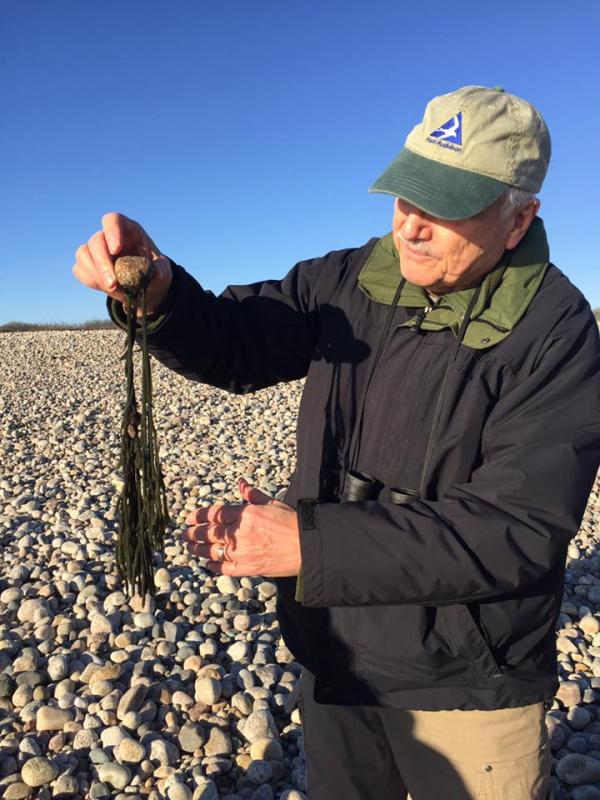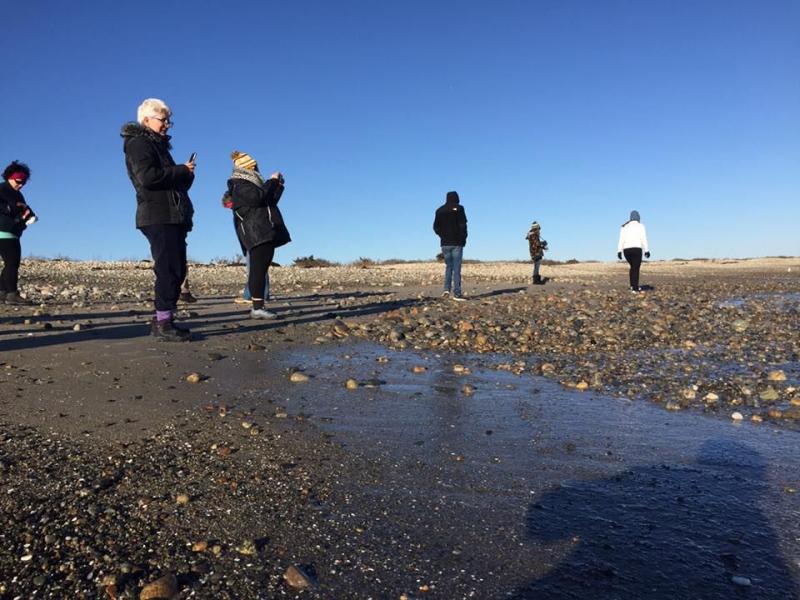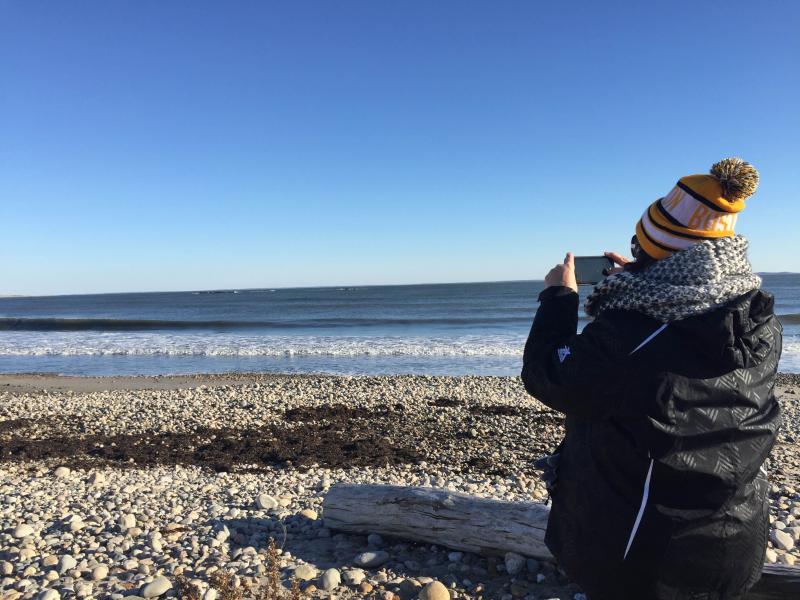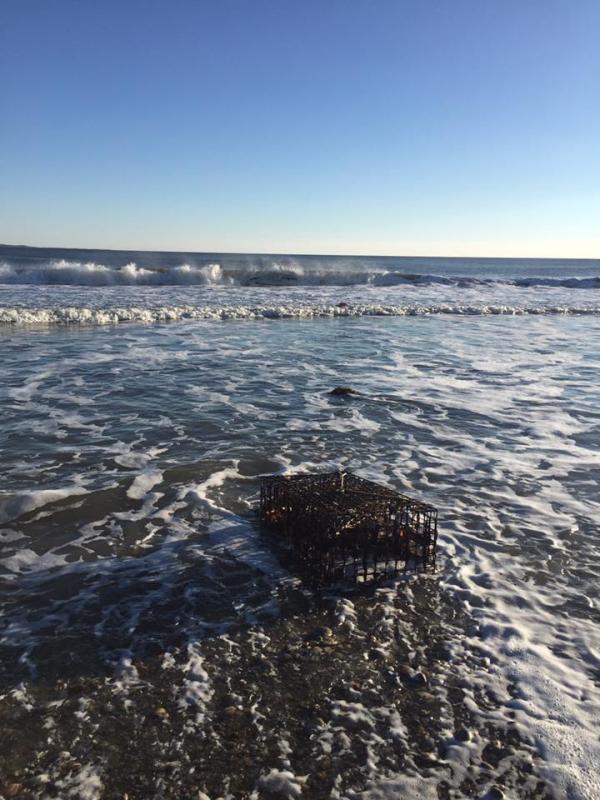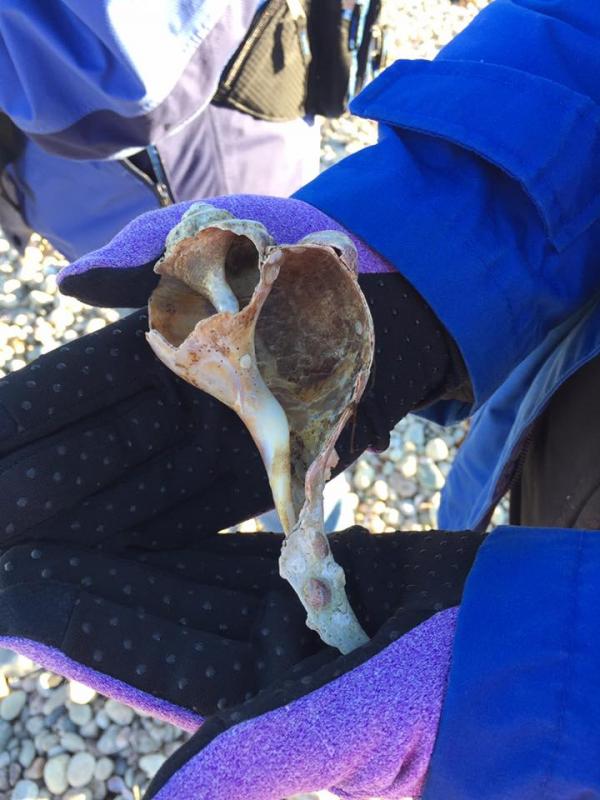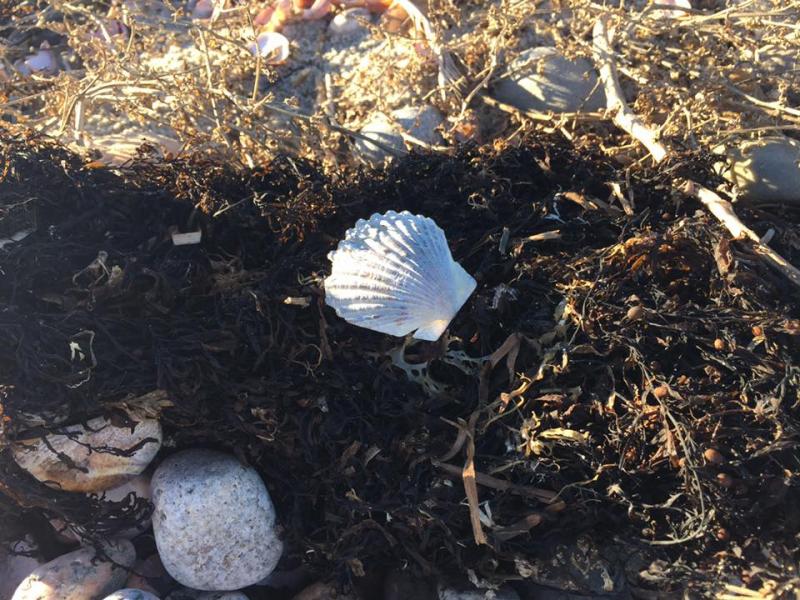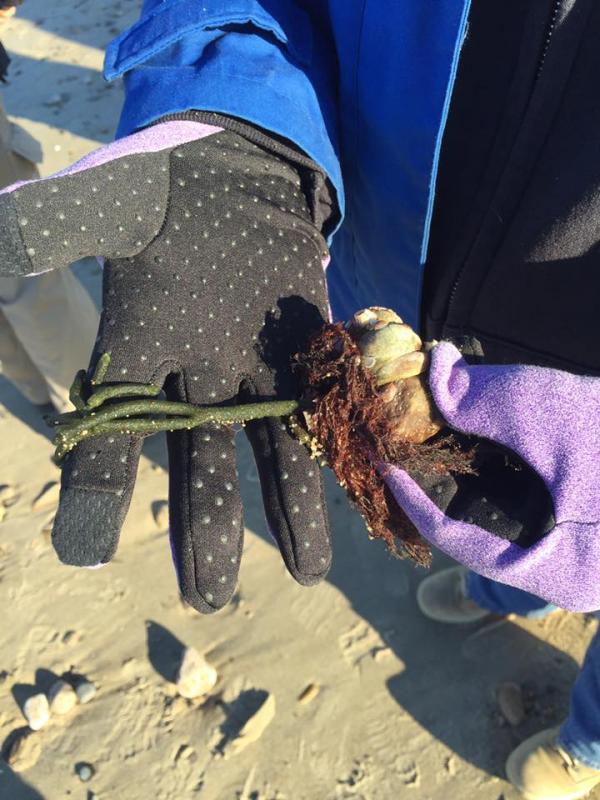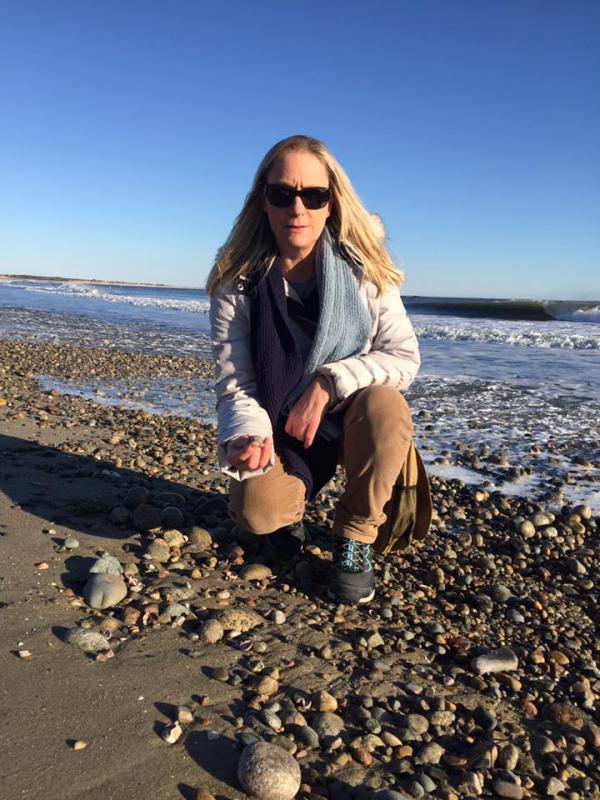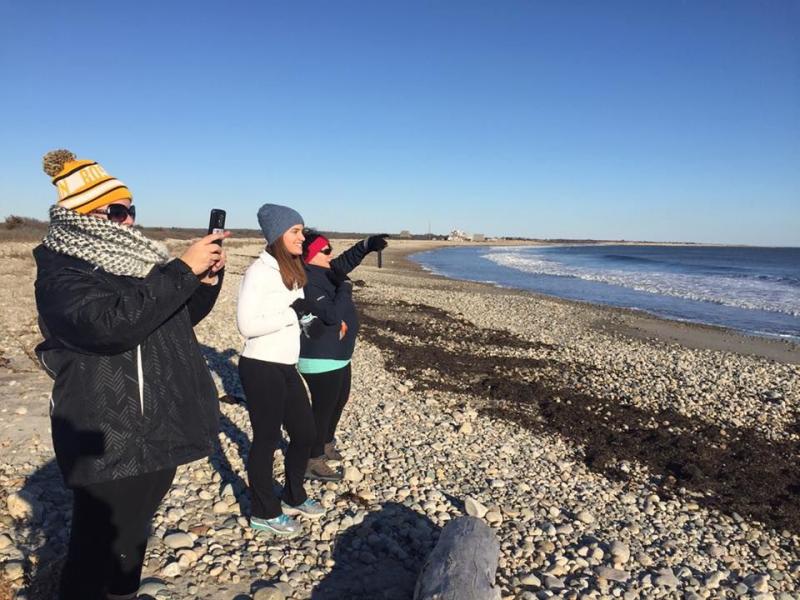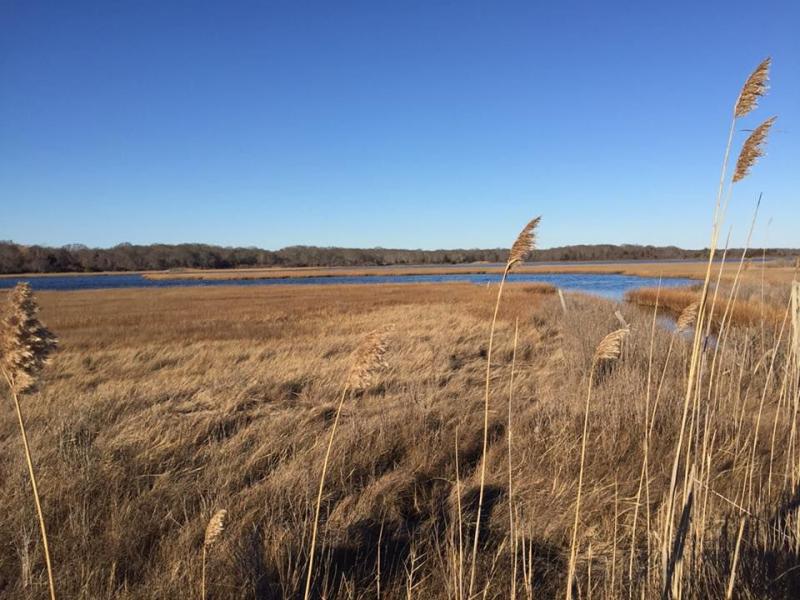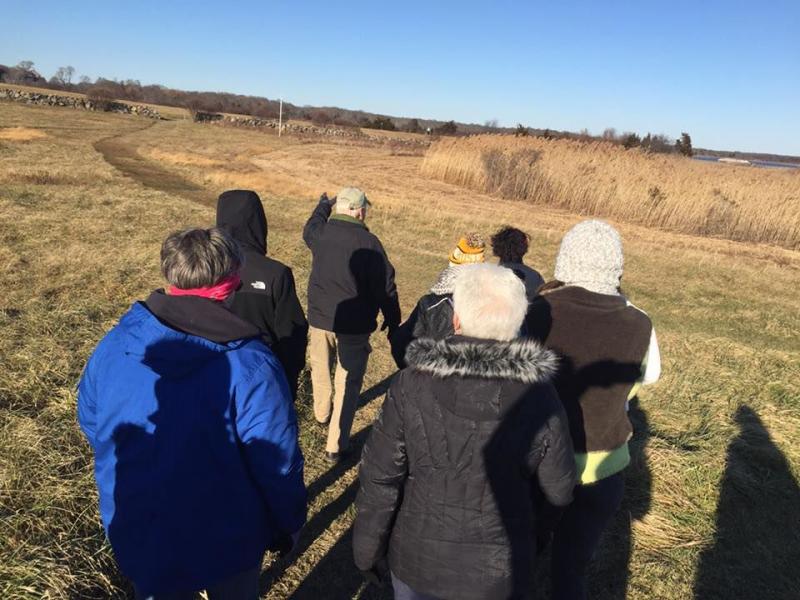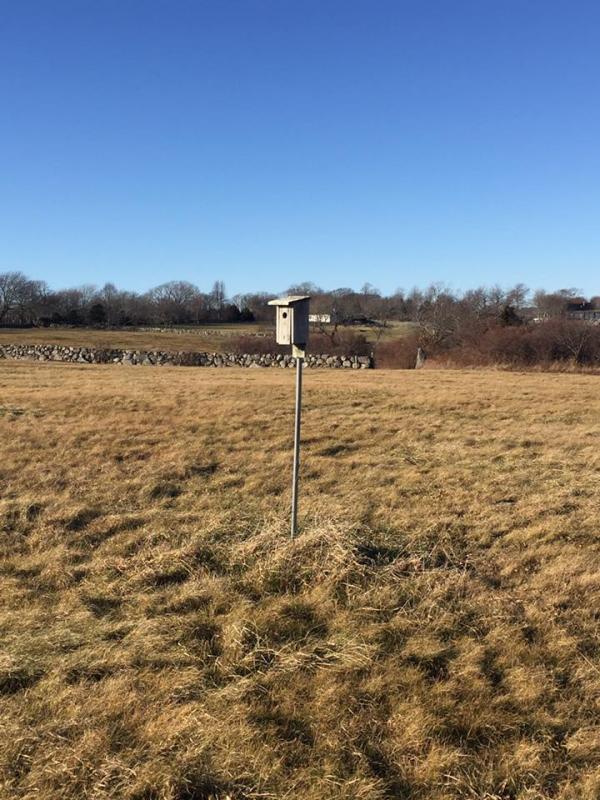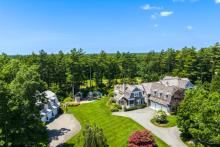Beach walkers enjoy photo ops, fun facts, and new friends
About a dozen walkers gathered at Mass Audubon's Allens Pond Wildlife Sanctuary on January 1 for a one-mile walk along the beach. Event leader Doug Hlousek — who has led the walk for the past seven years — offered insight into different items picked up along the walk, and attendees enjoyed the opportunity to ask questions and take photos. Here are the 12 things you missed from the New Year's Day walk:
1. The birdhouses on the property are intended for bluebirds, said Hlousek, although many birds take shelter from predators there.
2. Prior to being an animal sanctuary, the 1208 Horseneck Road property was all farm, said Hlousek.
3. Allens Pond is a salt pond, which means it has an outlet to the ocean, Hlousek explained.
"The mix makes it a natural hatchery for a lot of marine life," he said. Hlousek also explained that if the outlet gets blocked for whatever reason, it must be dredged out or a lot of cut-off marine life would die out.
4. In the summer, visitors can see harbor seals in the pond, said Hlousek.
5. The group picked up numerous "slipper shell" stacks. The shells house snails, said Hlousek. However, he explained, the top shell is always a male, while the bottom is always a female. Once the bottom snail lays eggs, she moves away from the stack, and it drops down so the next snail can lay.
The snails can change sex, so once the male creature at the top makes it to the bottom of the stack, he turns into a female, said Hlousek.
"It's not breeding season or egg season, so they attach themselves to a rock to protect themselves," he said.
6. The purple coloring inside a quahog was once used as currency among Native Americans, said Hlousek. Wampum — chips of the purple part of the shell — was even given a value by colonists, so that the natives could trade it for tobacco and other goods.
"The darker the purple, the more they were worth," said Hlousek.
7. Picking up a horseshoe crab shell, Hlousek explained that the creature is not really a crab.
"Would you know this is actually not a true crab? This is related to spiders and butterflies," he said.
8. Sometimes, you'll find brick on the beach, said Hlousek. The old sailing ships would carry bricks in the bottom of the boat for balance, he said. "When they got close [to the shore], they'd throw them away."
9. Scallops have eyes on each the shell's ridges. Scallops can't see like us, but they see shadows, said Hlousek. When in danger, they snap shut, and propel themselves through the water.
10. Showing off a dog shark egg that an attendee had picked up, Hlousek pointed out its tentacles. They're also called "mermaid purses," he said.
11. Hlousek himself picked up claws from blue crabs. "They're male," he said, explaining that, although the shells had been bleached by the elements, female crabs would have had red through the end of their claws.
12. Whelks look like a snail and can move along the ocean floor, said Hlousek. However, they have a tongue-like appendage that acts as a drill, cutting through the shells of various clams so that the whelk can feast on the meat.
"Why aren't there more whelks?" asked Hlousek. "They're cannabalistic." He explained that whelk babies — whelk eggs are also called a "mermaid's necklace" — will eat each other as they hatch. "It's survival of the fittest until they eat each other all up," said Hlousek.

